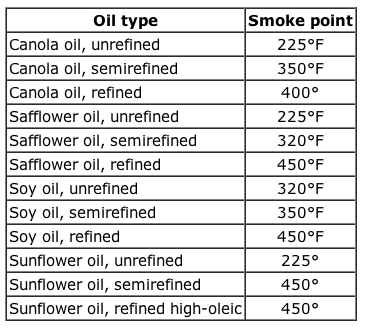Petty does not intend to acquire a Leibovitz. Not one of the 10 “master sets” of 157 of her prints that have been offered privately at an asking price of more than $3m per set; not even a single photo. “No,” he says firmly. “I nearly bought her portrait of the Queen but then I decided against it. She is obviously well-regarded but it is a distinctively American taste, her style of photography.”
It is only one collector’s view but it is a straw in a wind that has been blowing fiercely against Leibovitz, who is struggling to repair her finances, having built up multi-million-dollar debts amid a tangle of personal, professional and property troubles. The woes of one of the world’s highest-paid photographers have mesmerised the media and the art world.
Her troubles emerged publicly a year ago when she was sued by Art Capital, a New York firm that lent her $24m against collateral including her three houses in Greenwich Village and her photographic portfolio. The suit, which she described at the time as “harassment” and was subsequently settled, claimed the right to enter her homes to appraise assets that could be sold to repay the debt.
Leibovitz had been introduced to Art Capital by Ken Starr, a financial adviser whose clients included Hollywood celebrities such as Al Pacino, Sylvester Stallone and Martin Scorsese. Starr is now in jail and has pleaded guilty to diverting tens of millions of dollars from his clients’ accounts to his own. Last April, Leibovitz was bought out of the Art Capital arrangement by Colony Capital, a Californian private equity fund, giving her a breathing space.
The Leibovitz story, however, is more than a tale of a photographer who got absorbed into the high-spending world of the people she portrays. It is a reflection of something unexpected – that, despite all her celebrity and talent, Leibovitz lacks earning power as an artist.
If she could sell her prints in galleries or at auction for as much as former fashion and society photographers such as Herb Ritts, Bettina Rheims and Richard Avedon – let alone contemporary artists who work in photography, such as Cindy Sherman, Richard Prince, Andreas Gursky and Gilbert & George – her financial worries would ease.
So far, she has not. The most that one of her photographs has fetched at public auction, according to Artnet, the online auction house, is £31,200. That was paid in 2005 for a signed print of a 1986 photograph of the (now dead) artist Keith Haring, naked and daubed with paint. Most of her prints auctioned this year have fetched in the single-figure thousands of dollars, and some in the hundreds. (…)
Leibovitz has one great advantage over the paparazzi – access to people who spend much of their lives trying to avoid being photographed. The Queen only gave her 25 minutes but Leibovitz usually demands two days, or at least half-days, of her subjects’ time, and spends hours on the tiniest details. Her subjects open up to her because she gets close and wears them down.
“Access is amazing – the amount of time you are given with someone. When people relax in front of you then all kinds of magic can happen,” says Hoppen. “If you have a day with Brad Pitt then potentially you can take a great photo, whereas if he walks past you in the street and you grab a picture with your phone, it is not going to happen.”
Leibovitz thus has the potential to do what Avedon and Penn did – to become as highly valued as an artist as a commercial photographer. The fact that she has not achieved it, so far at least, is because of something more vital than access, maybe even talent. It is something that has bedevilled the photography world from the technology’s earliest days. She lacks rarity value. (…)
Photographs were made to multiply – the point of the technology is that a negative can be reproduced. “Rarity is essential and it is something that photography does not naturally have,” says Boloten. “You can print thousands of the things and a collector will ask: ‘Why am I paying a lot of money for a print when Picasso only painted one of each?’” (…)
Photographers who are alive present a bigger challenge in terms of scarcity. At 61, Leibovitz has plenty of her career left and she is known as a prodigiously hard worker, constantly adding to her portfolio. Prices for work of photographers such as Ritts and Mapplethorpe increased in the years following their deaths because that placed an unambiguous limit on supply.
Galleries have tried to solve this through editioning – limiting the number of reproductions of a negative to 10 or 15 high-quality signed prints, preferably made just after the photograph was taken. The dealers who represent photographers and have exclusive rights to sell their prints have become experts in curbing the market’s tendency towards over-supply.
“There were huge editions in the 1960s but the market has gone in a totally different direction,” says Alex Novak, a dealer in Pennsylvania. “The vast majority of prints are now made in very limited editions, and that has helped the contemporary market to remain fairly stable. It crashed and burned in past recessions because there were too many prints. ”
Calculating the optimal supply is a fine art in itself, since galleries want there to be enough liquidity for prints of any photo to change hands fairly frequently – which would be impossible if there were only one. Galleries often base their prices on the last recorded auction price and, especially in a rising market, want a recent reference point.
All of this planning over decades to raise the profile of photography and place limits on supply seems to be working. Photography accounts for a tiny proportion of the auction market – 2 per cent of sales in 2009, according to ArtTactic – but it has attracted growing investor interest. There are now several dedicated art funds, including the Tosca Photography Fund and the Art Photography Fund.
Not only did the total value of the contemporary photography market rise by 285 per cent between 1993 and 2008, according to Art Market Research, but it has been more resilient than contemporary art in the post-2008 downturn.
{ Financial Times | Continue reading }






















